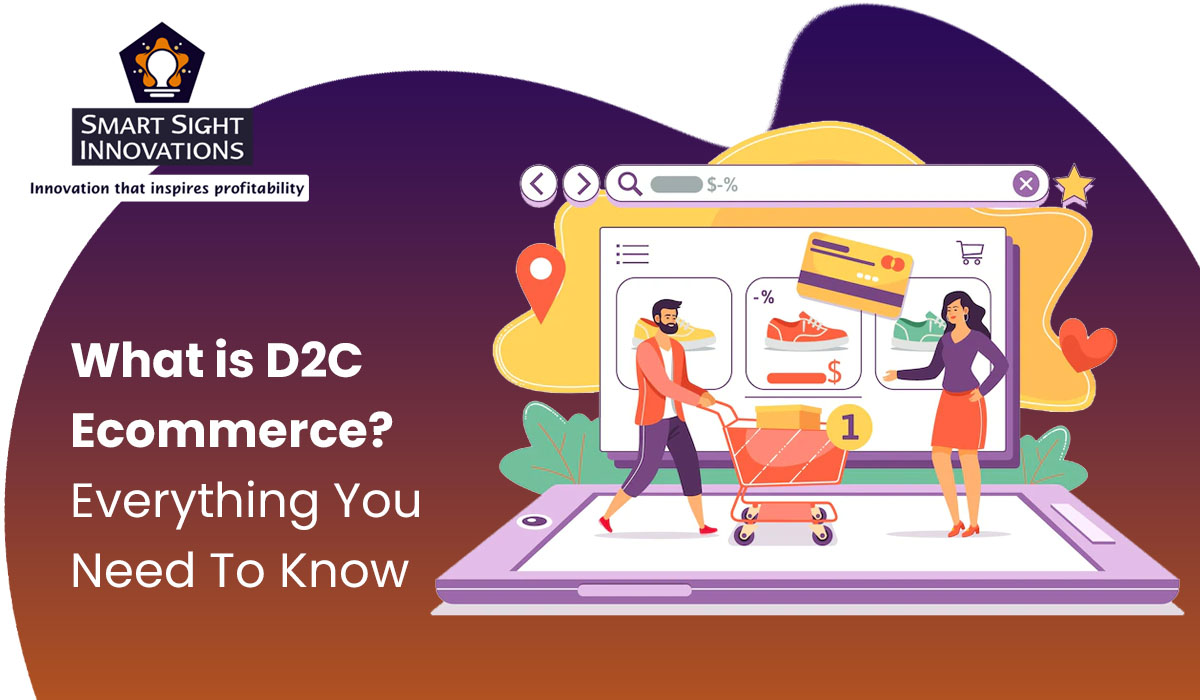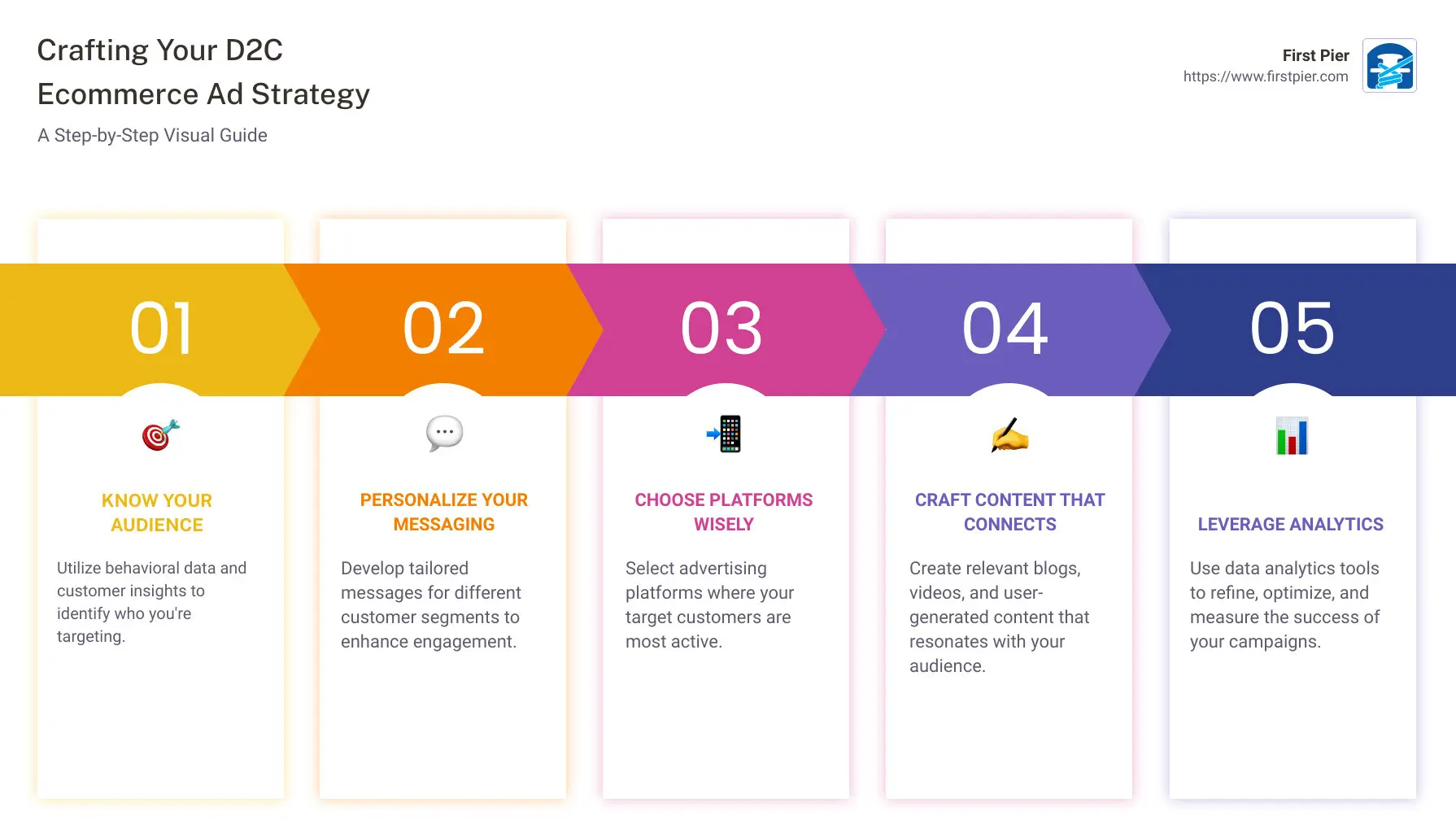Checking out the Potential of D2C Ecommerce: A Comprehensive Overview for Businesses
The D2C ecommerce model presents a substantial change in just how brand names engage with customers. It makes it possible for business to bypass conventional retail channels, cultivating deeper connections and potentially increased earnings margins. This technique is not without its complexities. Recognizing the subtleties of D2C ecommerce is important for brand names aiming to flourish. What methods can they take on to navigate this evolving landscape efficiently? The solutions may redefine their business approaches.
Recognizing the D2C Ecommerce Version

Trick Advantages of D2C Ecommerce for Brands
The D2C ecommerce version offers brand names significant advantages, particularly concerning boosted profit margins. By eliminating middlemans, firms can keep a bigger share of sales income. In addition, this straight relationship with customers promotes boosted brand name loyalty, motivating repeat acquisitions and lasting involvement.
Boosted Earnings Margins

Improved Brand Loyalty
Building on the economic advantages of D2C ecommerce, improved brand commitment arises as another crucial benefit for companies engaging directly with customers. By developing a straight connection, brands can promote deeper partnerships with their consumers, getting understandings into preferences and behaviors. This straight interaction permits for more individualized advertising and marketing strategies, which resonate highly with consumers. Furthermore, brands have the possibility to regulate their messaging and consumer experience, strengthening brand values and building count on. When clients really feel an individual connection, they are extra most likely to return, promote for the brand, and participate in community interaction. Eventually, boosted brand loyalty not only drives repeat purchases yet likewise cultivates a passionate customer base, additional strengthening a brand's placement out there.
Obstacles Dealt With by D2C Brands
D2C brands come across a number of substantial challenges that can impact their success. Inventory management issues can result in equip scarcities or excess, complicating procedures and client satisfaction. Furthermore, advertising and marketing budget plan restraints commonly limit the capacity to effectively reach and involve target audiences.
Supply Administration Issues
Efficient stock monitoring offers a formidable challenge for numerous brands operating in the direct-to-consumer (D2C) space. These brands usually grapple with fluctuating need, which can result in overstock or stockouts, inevitably impacting client satisfaction and income. Furthermore, the absence of innovative stock radar can result in discrepancies between real supply levels and reported information, making complex order gratification. The diverse series of products D2C brands generally supply additionally makes complex stock monitoring, as variations in sizes, shades, and designs call for more precise oversight. Additionally, lots of D2C services may fight with restricted warehousing capabilities, bring about inefficient use of room and sources. Consequently, effective stock monitoring remains an essential obstacle for D2C brands intending for sustainable growth and operational efficiency.
Marketing Budget Plan Constraints
Maneuvering advertising and marketing budget constraints is a considerable difficulty for lots of direct-to-consumer (D2C) brand names. Minimal financial resources commonly limit these business' capability to buy all-inclusive advertising approaches, resulting in minimized exposure in an open market. D2C brands often face the demand to maximize return on investment (ROI) while targeting details audiences efficiently. This challenge is exacerbated by rising expenses in electronic advertising and the need to allocate funds throughout numerous channels, including social networks, internet search engine, and e-mail advertising and marketing. Lots of D2C brand names should introduce economical marketing remedies, leveraging natural development methods and influencer partnerships. Inevitably, successfully maneuvering these budget constraints is essential for sustaining development and attaining lasting success in the advancing ecommerce landscape.
Strategies for Developing a Successful D2C Ecommerce Company
As customers increasingly seek direct links with brand names, developing an effective D2C ecommerce business calls for a strategic strategy that prioritizes consumer engagement and depend on. One effective technique is to create engaging brand stories that resonate with target audiences, promoting psychological connections. Using social networks systems can improve presence and facilitate two-way interaction, enabling brand names to engage directly with customers.Moreover, personalized experiences via tailored advertising and marketing initiatives can substantially boost customer retention and commitment. Carrying out commitment programs and offering unique bargains can further incentivize repeat purchases.Streamlining the buying process is important, ensuring a straightforward interface that boosts the buying experience. In addition, clear interaction regarding delivery and returns develops trust and motivates consumer confidence.Finally, actively looking for consumer comments and reacting to it shows a dedication to renovation and customer fulfillment, important components in the affordable D2C landscape.
Leveraging Technology for Improved Client Experience
In today's competitive D2C ecommerce landscape, innovation plays an essential function in forming client visit our website experiences. Companies significantly utilize sophisticated devices such as expert system, chatbots, and customized formulas to improve interactions and enhance the buying process. By incorporating these modern technologies, brand names can give customized product suggestions based on private preferences and buying actions, cultivating a much more appealing experience.Moreover, responsive website designs and mobile applications guarantee that customers can access solutions seamlessly throughout numerous tools. Enhanced settlement remedies, including one-click check outs and digital budgets, even more simplify transactions, making it easier for customers to make purchases.Data analytics likewise enables services to collect understandings right into consumer behavior, permitting continual enhancement of services and offerings. In general, leveraging modern technology not only enhances customer satisfaction but additionally grows commitment, inevitably driving lasting success in the D2C ecommerce field.
Advertising And Marketing Tactics to Drive D2C Sales
Just how can brand names efficiently capture the focus of customers in a saturated market? To grow in the direct-to-consumer (D2C) landscape, brand names need to utilize targeted advertising and marketing tactics. Making use of social media sites systems, brands can engage customers with interactive material, influencer collaborations, and user-generated articles. Individualized email campaigns can additionally promote a sense of connection, offering customized promos based on customer behavior and preferences.Moreover, narration plays a crucial duty in differentiating a brand's narrative, making it remarkable and relatable. Brands should purchase search engine optimization (SEO) to improve exposure, guaranteeing their items are quickly discoverable online. In addition, leveraging data analytics allows businesses to refine their advertising techniques and comprehend customer trends much better. Eventually, a multi-channel technique that integrates creativity with data-driven insights can greatly improve D2C sales, enabling brands to stick out in a jampacked marketplace.
Future Patterns in D2C Ecommerce
With the rapid evolution of innovation and consumer choices, the future of D2C ecommerce is positioned for substantial makeover. Emerging patterns suggest a change in the direction of hyper-personalization, where brands utilize information analytics to tailor offerings to specific customer requirements. This modification improves client experiences, promoting commitment and engagement.Moreover, sustainability is becoming a vital factor, with customers increasingly favoring brands that prioritize environmentally friendly practices - D2C Ecommerce Agency. Companies are expected to adopt transparent find this supply chains and sustainable products to meet this demand.The combination of expert system and increased truth will additionally reinvent the shopping experience, permitting customers to visualize items in their settings before acquisition. Additionally, social business is anticipated to grow, as systems like Instagram and TikTok assist in seamless buying experiences straight within social media.These trends collectively symbolize a dynamic future for D2C ecommerce, stressing customer-centric methods and innovative innovations that redefine consumer interactions
Regularly Asked Concerns
What Industries Benefit A Lot Of From D2C Ecommerce?
The current question highlights markets that flourish through direct-to-consumer (D2C) ecommerce. Remarkably, style, charm, electronic devices, and food sectors take advantage of D2C versions to raise brand name loyalty, boost customer connections, and enhance earnings margins efficiently.
How Do Shipping Expenses Affect D2C Rates Approaches?
Shipping expenses substantially affect D2C prices methods. Businesses have to stabilize these costs with affordable pricing, considering customer expectations and revenue margins. Effective monitoring of shipping can improve consumer complete satisfaction and drive sales in direct-to-consumer versions.
What Payment Options Should D2C Services Offer?
D2C companies should supply varied settlement choices, consisting of credit/debit cards, electronic purses, and get now, pay later on solutions. This selection enhances customer convenience, enhances conversion prices, and deals with different customer choices in the on the internet buying landscape.
Just How Can D2C Brands Take Care Of Customer Returns Efficiently?
D2C brands can take care of client returns effectively by carrying out straightforward return policies, offering pre-paid shipping tags, and making certain timely refunds (D2C Ecommerce Agency). Clear interaction and structured processes enhance customer contentment and urge repeat organization
What Legal Factors To Consider Exist for D2C Ecommerce Workflow?
Legal considerations for D2C ecommerce procedures consist of conformity with consumer security legislations, data personal privacy regulations, copyright rights, and taxation needs. Brand names need to browse these complexities to prevent legal pitfalls and assure smooth procedures. By eliminating middlemans, D2C brands can offer competitive pricing and foster a more intimate relationship with their customers.The D2C model is characterized by its reliance on electronic platforms, enabling brand names to use social media, on the internet markets, and their very own websites to involve with consumers directly. D2C ecommerce facilitates the collection of important customer data, making it possible for brands to customize their offerings and marketing approaches pop over here effectively, inevitably driving sales and enhancing margins. In addition, brands have the chance to control their messaging and consumer experience, strengthening brand name values and developing trust. As customers significantly look for straight links with brand names, establishing a successful D2C ecommerce service calls for a strategic strategy that prioritizes client engagement and depend on. D2C brand names can handle client returns efficiently by carrying out user-friendly return policies, using pre-paid delivery tags, and making certain punctual reimbursements.